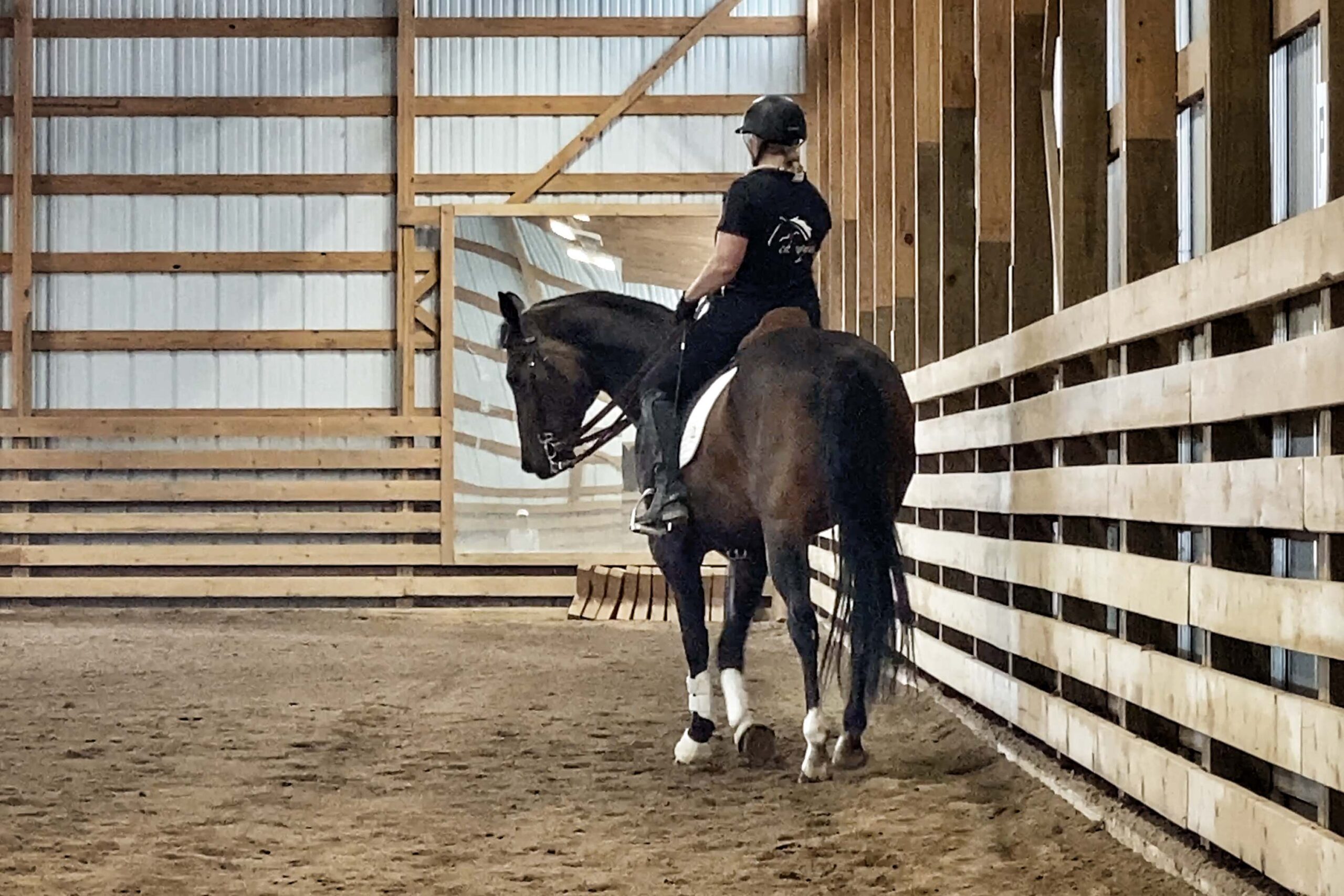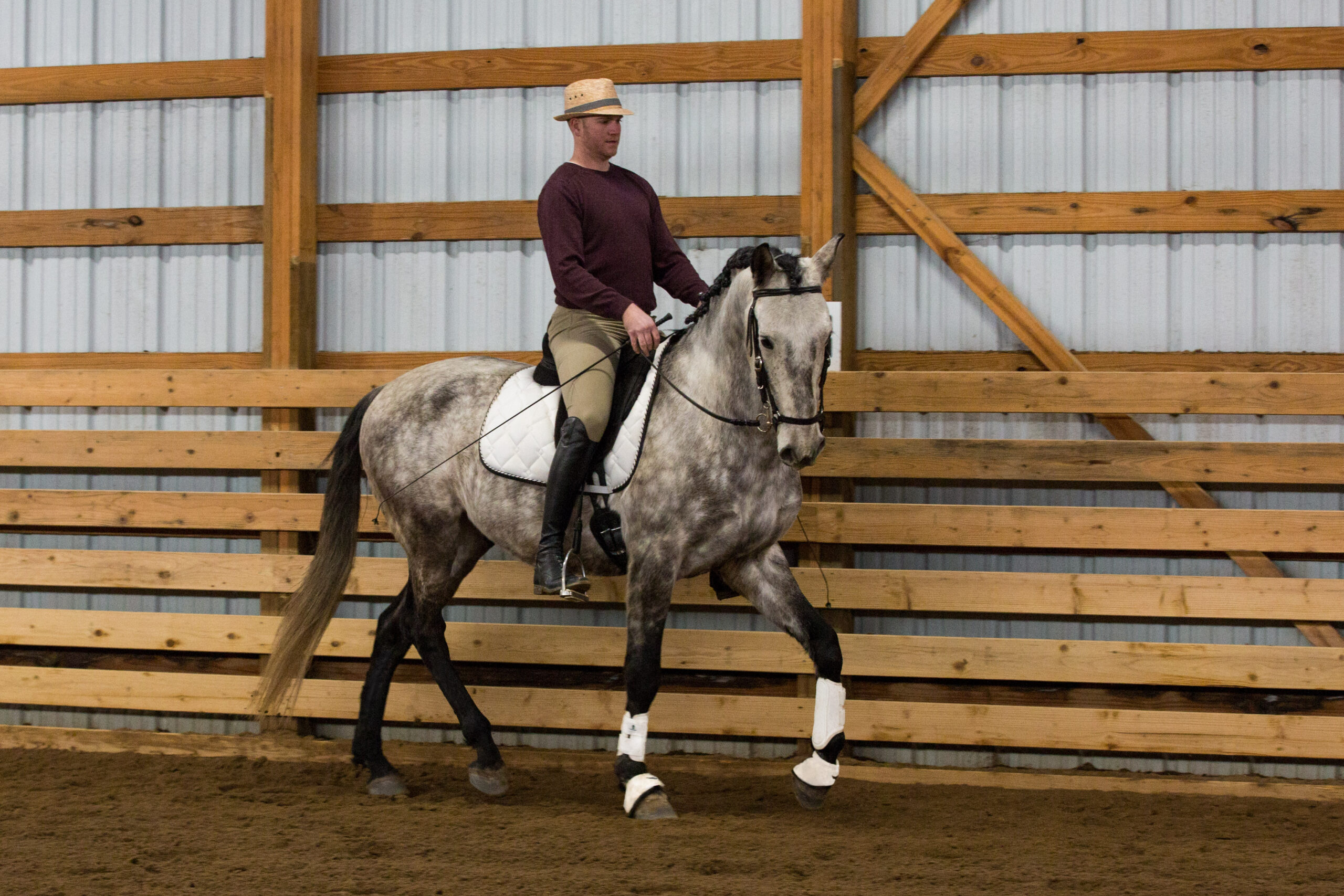by Cody Harrison
Buying a horse
Buying a new horse can be an exciting time, as it should be! This is not something most people do more than once or twice in their time owning horses. This adventure should be well thought out so there are no regrets shortly after.
Organization before the shopping begins.
As a buyer, there are several things that you must take care of before you start inquiring about horses.
- Make your partner, family, and friends aware of your plans so that you have support.
- Have your money in the proper place so you can promptly exchange money when the time comes.
- If you will be boarding your horse, be sure to select a facility and pay the deposit so that space is available for your new horse.
- Be sure to make arrangements with your trainer to help you.
- Know what type of horse you want and what amount of training you want them to have.
- Know what your budget is. Do not forget about Pre Purchase Exams, Horse Transport, Trainers’ Percentage, and Travel Expenses.
It is crucial to have all of these things organized so that you can be respectful of the seller’s time. You do not want to waste anyone’s time by not being organized.
Have Professional Help
Having a knowledgeable and trustworthy trainer help you is well worth the fee. They will keep you safe and ensure you and your prospective horse are a good fit. Most trainers charge between 10-12% of the final sale price of the horse plus travel expenses, if there are any.
Some buyers do not understand why paying the trainer’s percentage is worth it. Let me explain how things work when I help a client find a new mount. It should be similar to any other trainer who is doing their job well. I start with phone calls to people I know and have dealt with before whom I already trust and have a professional relationship with. I run ads online for In Search Of (ISO). I often filter through 20+ horses before sending a prospective horse to a client to review so I do not waste their time with horses I know will not work for them. I will talk to multiple sellers and get additional videos and information about the horse. This saves you many HOURS so that you can continue with your daily life.
A trainer is able to leave out the emotions a buyer may go through. It is vital to have an outside person see things as they really are while you “ooh” and “awe” over a horse that you think is your unicorn. In your heightened emotional state, you may not see the horse’s shortcomings or play them off as not being as bad as they are because he is so pretty, and it will be worth putting up with or dealing with. Remember, unicorns have four straight legs and good feet and do not weave like a junky on withdrawals.
Finding “The One”
It is of utmost importance that you and the person helping you are both on the same page and truly understand what you need. Be honest with what your level is, how much time you have, and what time and money you have for the continued training you want or will need with your new horse.
Once you and your trainer have found a horse that seems suitable for you, you have two options.
- Go test-ride the horse.
- Get more videos and buy sight unseen.
I always recommend going to ride the horse if time and money allow. This is the best way to see how safe you feel, how comfortable the horse is to ride, see how your personalities match, and you can make sure nothing is hidden from you.
I have successfully bought many horses sight unseen through videos with success. If you have the right professional helping you, they can see a lot in the videos that the amateur eye may miss, and they know what additional videos and pictures to ask for.
Pre Purchase Exams (PPE)
Protect your investment. Do NOT skip a PPE! A PPE is what helps you make sure your horse will last the time you need. A PPE can tell the hidden past of a horse, and if something is found, it can be used to negotiate the price of the horse down.
There are different levels of PPE’s. Depending on your budget, you can start with a general health exam where the vet will look at the horse’s overall health. They evaluate eyes, lungs, heart, coat, look for abnormalities on the body, and soundness issues. Depending on this evaluation, you may decide what you want to look into further. Perhaps, only doing a few X-rays on a joint that the vet felt some fluid in or the horse appeared to be sore on.
If you are buying a more expensive horse that has a bright future or has already had an extensive career, X-ray everything; legs, neck, and back!
It is also a good idea if your vet is not the vet doing the PPE, to have the PPE results sent to your personal vet to go over to get a second option that you know you can trust. Let your vet go over the X-rays and read the report.
Price Negotiation
Be Polite!
Remember that you are attached to a profession in this process, and you need to conduct yourself as one as well. Even if an agreement cannot be met, you can still be cordial about it.
By the time you get to this point in the process, you might already have a feel for the seller if they are going to be negotiable or not.
There can be some price negotiation before the PPE is done if needed, but final negotiations are always done after the PPE has been completed. I always tell my clients that if they are not willing to pay what the seller is asking, then we do not even bother moving forward. Some sellers are not willing to negotiate on price, and that is their choice. A buyer has to be ok with that if they really like the horse. Do not look at horses outside of your price range in hopes that they will negotiate down.
It is important to know where the market is so that you and your trainer can evaluate a fair price for the horse so that you do not get taken advantage of. There need to be some legitimate reasons for you to request a reduced price for the horse.
Closing Remarks
Have everything in place before starting your search.
Take your time but do not waste the time of others. Some people are lucky enough to have the first horse they look at be the one. Others may have to search for six months. In the long run, over the next 15-20+ years with that horse, it is not that long to wait for the right horse.
Be honest with yourself and the people you are dealing with.
Be prepared for your new horse to have an adjustment period when he arrives at his new home. Some horses settle quicker than others but do not be worried if it takes up to a month. Consistency is a big help in settling a new horse.
Questions? Reach out to Cody Harrison at info@ch-equine.com
by Carrie Harrison
How did last week go for you?
Do you feel like progress was made, or are you feeling stuck?
I have been working hard on making a mental shift with my riding. Rather than focusing on things that went wrong, I am doing my best to give lots of praise 🙏 to my horse (and myself) for what was correct. Do your best to ignore those not-so-great moments. 😬 Acknowledge that they happened and realize you and your horse have things to improve, but don’t focus your energy on the mistakes.
Take the good moments and hold on to them. Think about them in the shower, on your drive to work, or while getting your horse tacked. Think about how those good moments made you feel. Wouldn’t it be amazing to feel that way with all or most of your rides? Heck, yes, it would!!! 😍
You and your horse are not perfect. You are both on this journey together – learning
and growing. Don’t be so hard on yourself or your horse. 🏇 Focus your energy and intentions on what you want. Don’t waste your energy on mistakes. As Tony Robbins says, energy flows where attention goes.
by Cody Harrison
Riding is an enjoyable pastime. Spending time with a horse does more for an equestrian’s soul than most other things on earth. Non-equestrians will never understand the obsession, the amount of time we spend in the muck, or why we let our vehicle smell that way. We do it to repay the horse for what they do for us. For some people, horses give them a sense of purpose. For others, an escape from the rush of daily life. Some it allows them to have a better social life. But, for all, it has to do with that unique feeling that the horse gives us. A sense of safety, a feeling of love, a feeling of freedom, a feeling of friendship. These are only a few of the things that fulfill the purpose of why we have our horses but, what about our purpose for the horse.
Horses help heal and prepare us for more than most of us even understand. It is important that the things we do with our horses are beneficial to them as well. There are lots of activities we can do with them. It is more about how we do the activity that will either help or hurt our horsey friends in the long run. It is sometimes a specific moment that you can remember that may have caused your horse to be sore or even lame. Most of the time, it creeps up on them from doing things incorrectly over a period of time, and the owner has no idea what happened. The reason for most lameness is a result of the horse not quite moving the right way for a long enough period of time that they eventually start to wear themselves down.
Biomechanically the horse is one of the best, if not the best, designed animals on land, which is why they are so athletic and are able to maintain that athleticism while being ridden. The kicker is that in order to have a long healthy career, they need to move in a specific way so that they do not cause unnecessary stress on their bodies. It is important to work them in a way that also does not cause anxiety or any other mental stress as well. A horse has the structural integrity to carry a rider, but it does not naturally know how to carry the added weight of the rider. This is something that needs to be taught. It is one of the most important things a horse needs to learn, or they will not be able to move with grace and balance.
Every move we make while riding needs to have meaning and a purpose for your horse. Each time you ask your horse to do something, you also have to think about how they need to do it and what balance they need to accomplish what you are asking. Helping your horse find a balanced position for whatever movement you are asking for and doing it in a way that lets your horse be supple are the two best things you can ever do for your horse. Focusing on those two things while working will ensure that your horse is happy and will continue to be a willing partner for you.
It takes time to develop the feel for what, when, and how things need to happen with your horse. Do not be too hard on yourself if you make a mistake. Your horse knows the difference between an honest mistake and you doing things in malice. Once your horse figures out that the reason you are doing these things is for them, they will begin to be more patient and willing. Know exactly what you want before you ask. Be clear when you ask. Give your horse time to think through it and help them where they need help. If you think about these four things when riding, you will find more success in your rides. We all love our horses, the stubborn ones, the lazy ones, and even the crazy ones. Because one way or another, they are fulfilling their purpose for us. It is your purpose to help them become better as they help you become better, in whatever way that is. Long ago, horsemen coined the phrase “the rider’s aids.” They are called aids because they are to help the horse. Not to dominate or punish or even control. Work with your horse, for your horse, so that your horse can continue to help you as the two of you enjoy your own unique experiences together for many years to come.
by Cody Harrison
It is important to prioritize your ride. The most important part of prioritizing what you are going to work on is not what you choose to work on but rather what dictates you to choose those things to work on. What should dictate what you “choose” to work on should come from the horse you are working with. What do they feel like, what do they need physically and mentally, what do they need from you as the rider (voice, leg cues, seat, hands, etc.)? It takes time, practice, and a willingness to learn to develop the skill it takes to feel and see what your horse needs.
Too often, we ask our horses to be straight from a young age. It is common for the rider to ask the horse to be straight before being equally balanced left and right. Horses are asked to be straight before they find balance and understanding. Straightness is not the goal of training but rather the result of it. A horse that is correctly trained with a technique that allows him to mentally understand and relax as well as perform the exercises to make them more balanced and athletic will ultimately be a horse that can be straight.
Straightness should be a test to test the training itself. When you let the horse be straight, he should stay between all of the rider’s passive aids. Passive aids mean that the rider is not doing anything to assist the horse, but the rider is ready to help the horse if needed. You should not hold your horse in a straight position; this would be false straightness. If a horse is forced to be straight before they are truly balanced, they will become rigid in their body to compensate for the lack of balance and become reliant on the aids of the legs and hands. When a horse becomes reliant on the aids, you have to use them all of the time, and then your horse slowly becomes duller and duller to the aids, and so begins the vicious cycle of tug-a-war.
Straightness is the kiss of death for a horse if it is prioritized above balance and suppleness. Straightness fixes nearly nothing! That’s because straightness is a result, not an exercise. When people are sore, we stretch, we bend, we move our body in all different directions to work out the stiffness so that we feel better and can be comfortable in a straighter position again. Imagine a soccer game where the players were always straight. (Straight up because we are vertical, unlike our horizontal partner, the horse.) It would be a very awkward-looking game that is not very exciting. If soccer players were forced to play this way, they would not be able to show their unique talents and abilities based on how they are built, their preferences to train, and how they perceive the game themselves. As for horses, we have become accustomed to seeing a cookie-cutter look for all the horses. Horses that are all in the same position as each other and for every movement. It is not possible for all horses to maintain balance, suppleness, and mental relaxation in the same posture. Not all horses have the same conformation. Not all horses have the same strengths and weaknesses. Not all horses have the same preferences.
Don’t try to make your horse look like the next horse or look the same way as another horse you admire and aspire your horse to be someday. Your horse is just as much an individual as you are. Your horse’s balance and position need to adjust to each and every movement. This allows the horse to stay supple during the movement because balance and lightness exist! Whenever you see a soccer player change directions while dribbling the ball down the field, you will see their position change to adjust their balance for that next step, whether one step or twenty.
Humans are naturally controlling. The horse’s natural response to control is resistance. With time, you can learn how to be in control without being controlling. Tell your horse what movement you want, and then let them show you how they can do it. Let your horse be themselves and guide you with what they need to be mentally comfortable, strong, flexible, supple, and balanced. All of these things together will ultimately result in straightness.
.



